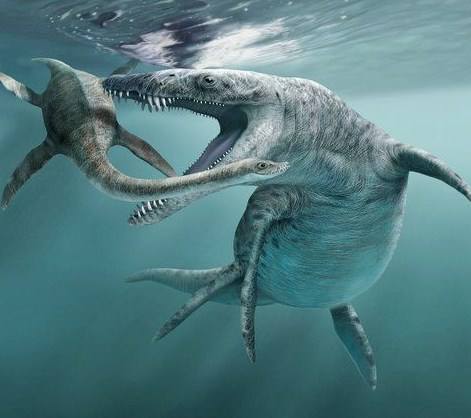The Kimmeridgian Age - Approximately 150 million years ago…
The Kimmeridgian World of the late Jurassic period was one of warm seas deep enough to be undisturbed by surface storms, shallow enough to be home to a teeming host of marine life. From ancient fish, squid, coiled ammonites, sea urchins and turtles to long necked reptiles like the Plesiosaur, the dolphin-like Ichthyosaur and, at the apex of the food chain, the ferocious Pliosaur.
In the air above, vertebrates like the Pterosaurs and first birds had already taken flight and further away on the land masses, great plant eating dinosaurs were roaming the Earth feeding on lush ferns and palm-like plants stalked by smaller but vicious carnivores, the forerunners of the ultimate dinosaur villain, Tyrannosaurus Rex.
It was a time when Europe was an archipelago of islands in a shallow tropical sea significantly closer to the equator than it is today. The terrestrial formations and their fossil treasures, Kimmeridgian in age, have been found all over the world, from Germany, France, Switzerland, Spain, Norway to India and as far as New Zealand. Follow the link HERE to visit an interactive globe where you can see how the Earth looked 150 million years ago….
Our amazing museum gives a depiction of what life was like 157 million years ago here at Kimmeridge. Some of the fascinating fossil specimens are now extinct, ancient creatures that we can now only make assumptions on how they lived from the evidence locked into their fossil remains. Others, like the sharks, rays, squids and fish have little evolved and you can find their present day relatives still swimming in our seas today. We like to think our museum gives the visitor a chance to step back in time but to also understand the links of how life in the Jurassic intrinsically connects to life on earth in the present day.
Scientists are always working on the latest evidence and theories on how some of the biggest ‘monsters of the deep’ lived back during the times of the Jurassic. Studies are made to make comparisons to creatures alive today that may help in solving such mysteries as how they may have swam. Linked below is one such study on how the leviathan of the seas, the mighty Pliosaur may have swam - this is a fascinating look at an animated swim cycle of how this awesome creature propelled itself through Jurassic seas…..










